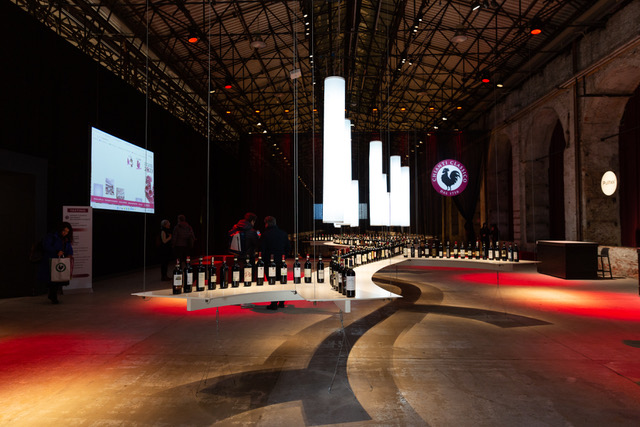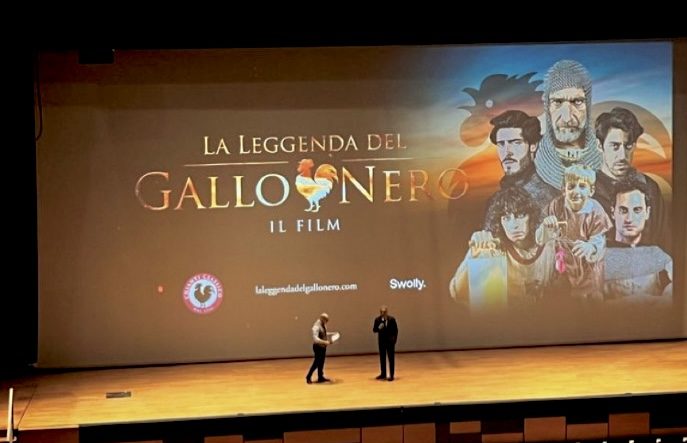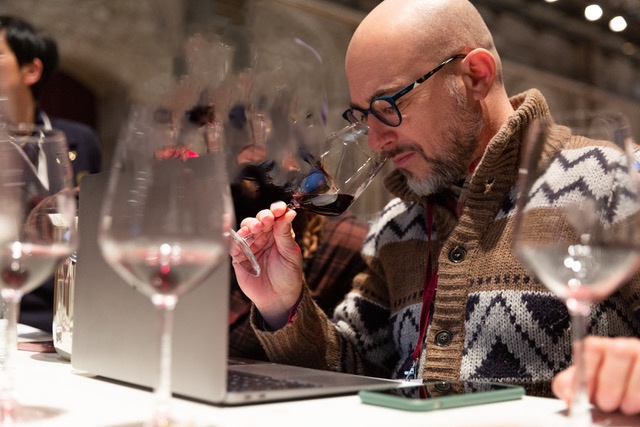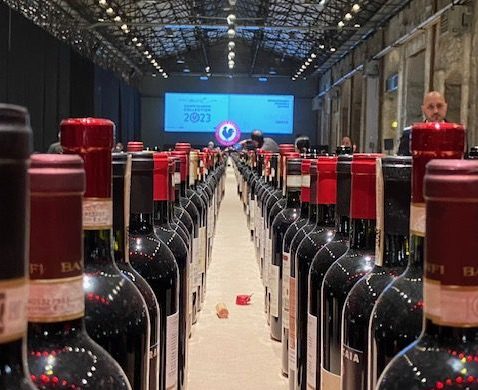This website uses cookies so that we can provide you with the best user experience possible. Cookie information is stored in your browser and performs functions such as recognising you when you return to our website and helping our team to understand which sections of the website you find most interesting and useful.
Top picks from the Chianti Classico Collection 2023
Sometimes, even the Italian press and trade get confused between Chianti and Chianti Classico let alone those beyond Italy’s national borders – but if there is one message that came out loud and clear from the Chianti Classico Collection 2023 it is that Chianti is Classico, and there are hundreds years of history behind it to prove it.

In order to highlight the strong identity of Chianti Classico – the high-quality red wine from Tuscany with some of the strictest production rules – the Consortium invested in a short film to appeal to a large audience through the universal language of cinema. Local production house SwollyStudio created the film about the mysterious origin of the medieval myth of the Black Rooster, the logo that must be displayed on every bottle of Chianti Classico. It is a story about the war between Florence and Siena and the subsequent peace between the two Republics that allowed the region to thrive. As a result Chianti Classico is not only one of the oldest appellation in European wine history but above all one of the most vibrant wine territory that we know today.
This is due to its wealth of history, biodiversity, climates, soils, altitudes, exposures, temperatures, grape varieties – above all indigenous varieties, led by Sangiovese – and the number of companies (482, mostly family-run, of which 52.5% are organic), which has made the appellation so distinct. This is the most vigneron-driven appellation of Tuscany, with so much to offer from any point of view. A territory protected and taken care of by its producers, who have been stubborn in their relaunch of the symbol of the Black Rooster, giving up the temptation to plant more and more vineyards – there are only 10,000 hectares of vineyards out of a total area of 70,000.
Today this holistic entrepreneurial growth means amazingly kept wine estates in the middle of the forest with its many historical sites proving it to be a fabulous wine tourism destination. But while tourism is growing, Chianti Classico has not gave up its ambition to work towards higher and higher quality. So, after long discussions, the design of UGA (Additional Geographical Units) – a sort of Italian Cru system – that was partly mentioned by the Grand Duke of Tuscany Cosimo III in 1716, is today a reality. Last week’s news is that the UGAs can be mentioned on the label from the 2022 harvest. In addition to Chianti Classico Docg, therefore, San Casciano, Greve, Montefioralle can be found mentioned , Lamole, Panzano, Radda, Gaiole, Castelnuovo Berardenga, Vagliagli, Castellina and San Donato in Poggio.
Each of them, with a little in-depth analysis, will be able to give you valuable information on the type of wine that you will find in the bottle: for example, the more reactive and balsamic wines from the coolest area of Radda or Lamole; the more generous and broad of Panzano and its sunny Conca d’Oro.

Chianti Classico Annata
But before getting passionate about the subtle differences told by the UGA, it will be more useful at the moment to focus on the qualitative pyramid of Chianti Classico DOCG. At the base are the Chianti Classico Annata. They are wines that must age at least 12 months and which represent the most sincere and readable soul of the companies as well as the best value for money – if you want an immediate, crunchy and yet refined wine, this is the type of label to turn to.
Among the 2021 we loved the following: the red berry crush driven Castello di Monsanto; the super vibrant Monte Bernardi-Retromarcia or the very fragrant Cigliano di Sopra; the more forest floor and medicinal herbs Monteraponi. Also you gotta try the mountain herbs and energy Poggerino as well as the sweeter and pulpy fruit of Riecine and the rounder and softer Rocca delle Macìe.
If you like some more age then also the Annata 2020 from Castello di Radda or the deeper and earthier Fattoria di Pomona will do the trick!
Chianti Classico Riserva

If, on the other hand, you are looking for a more concentrated and powerful style Chianti Classico Riserva is your choice. This category must be aged at least 24 months and as a result the wood aging and the selection of more structured vineyard sites add up intensity and complexity. Here there will be also some more “modern” interpretations, thanks to the blend with international vines not uncommon to find.
The Chianti Classico Riserva 2020 showed some very generous wines including:
- Caparra – Caparsino
- Alongi – Vigna Barbischio
- Monteraponi – il Campitello
- L’Erta di Radda
The Chianti Classico Riserva 2019 were some of the most impressive Tuscan wines tasted this year with a great structure, finesse, fruit extraction and longevity. A list of the samples that impressed us the most for their balance tannic touch and drinkability already now and amazing aeging potential are:
- Borgo Salcetino
- Lucarello
- Castello di Ama
- Montebuoni
- Castello Monterinaldi
- Istine – Le vigne
- Ormanni
- Borro del diavolo
- Rocca di Castagnoli – Poggio a’ frati
- Val delle Corti
The Chianti Classico Gran Selezione
Finally, at the tip of the pyramid, there is the Chianti Classico Gran Selezione, introduced in 2015 and recently regulated in a more stringent way: only wines from single vineyards or from a selection of the best grapes exclusively owned by the company; minimum aging of 30 months; mention on the label of UGA.
Among the riper fruit driven and yet structured Gran Selezione 2020 Chianti Classico, the following wines stood out for their integrity:
- Castello di Fonterutoli – Vicoregio 36
- Castello di Querceto – La Corte
- Tenuta di Arceno – Strada al Sasso
- Castello di Albola – Il Solatìo
- Ricasoli – Castello di Brolio
- Principe Corsini – Don Tommaso
- Tenuta di Bibbiano – Vigna del Capannoni
- Castello di Meleto – Vigna Poggiardo
- Castello di Volpaia – Coltassala
- Lamole di Lamole – Vigna Grospoli
- San Felice – Il Grigio
- Tenuta di Lilliano
The Gran Selezione therefore aims to represent the highest, longest-lived and most evolutionary expression of the territory and in fact the production covers only 6% of the total (45% together with the Riserva). A limited quantity that is also rising in value (+15% on 2021) covering 13% of the turnover of the total appellation. The numbers for 2022 are actually positive for the whole territory, which grows by 6% in production and 17% in value compared to 2021. The US market is the driving force (+12%, covering 37% of sales), followed by from the Italian one (19%): followed by Canada, the UK, Germany and the Scandinavian countries, but also unusual destinations, reaching 160 different countries all over the world.


